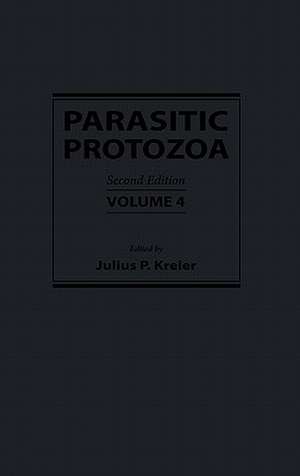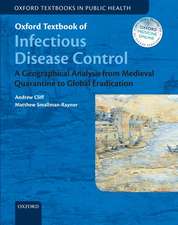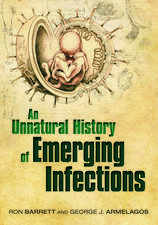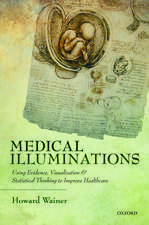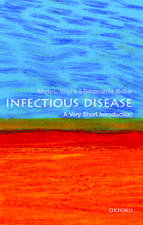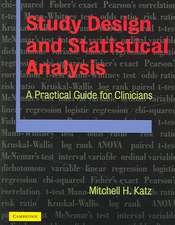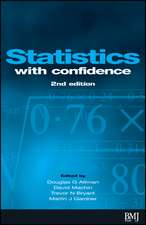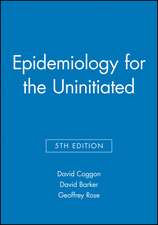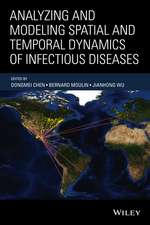Parasitic Protozoa
Julius P. Kreieren Limba Engleză Hardback – 29 iun 1993
Preț: 439.10 lei
Preț vechi: 570.26 lei
-23% Nou
Puncte Express: 659
Preț estimativ în valută:
84.02€ • 87.96$ • 69.52£
84.02€ • 87.96$ • 69.52£
Carte tipărită la comandă
Livrare economică 05-19 aprilie
Preluare comenzi: 021 569.72.76
Specificații
ISBN-13: 9780124260146
ISBN-10: 0124260144
Pagini: 323
Dimensiuni: 152 x 229 x 20 mm
Greutate: 0.63 kg
Ediția:Revised.
Editura: ELSEVIER SCIENCE
ISBN-10: 0124260144
Pagini: 323
Dimensiuni: 152 x 229 x 20 mm
Greutate: 0.63 kg
Ediția:Revised.
Editura: ELSEVIER SCIENCE
Cuprins
Contributors
Preface to the Second Edition
Preface to the First Edition
Chapter I Avian Coccidiosis
I. Introduction: Significance of the Avian Coccidia
II· Taxonomy and Nomenclature
III. Basic Life Cycles
A. Stages in the Life Cycle
B. Summary of the Life Cycle of a Typical Eimeria: A Homoxenous Life Cycle
C. The Unique Aspects of the Life Cycle of Crytosporidium: A Homoxenous Parasite Capable of Autoinfection of its Host
IV. The Coccidia of Avian Hosts
A. The Classic Coccidia
B. Avian Cryptosporidiosis
C. Avian Toxoplasmosis
V. Genetics of Coccidia
A. Sex Differentiation and Cloning
B. Strain Variation in Coccidial Virulence
C. Cross Fertilization
D. Precocious Development
VI. Host Specificity of Coccidia
VII. Site Specificity of Coccidia
VIII. Viablility of Coccidial Oocysts
IX. Metabolism of Coccidia
X. Pathophysiological Changes Induced by Infection with Coccidia
XI. Effects of Dose and Frequency of Dosing of Oocysts on Coccidial Disease
XII. Effects of Age of Host on Coccidiosis
XIII. Effects of Enteric Bacteria and Nutritional Status of the Host on Coccidiosis
XIV. Interactions with Viruses
XV. Interactions Between Species of Eimeria
XVI. Immunity Against Eimeria Infection
A. Endogenous Stages Initiating the Immune Response
B. Stages Affected by the Immune Response
C. Duration of the Immune Response
D. Immunization Using Various Routes of Inoculation
E. Mechanisms Using Various Routes of Inoculation
F. Practical Aspects of Immunity to Coccidia
XVII. Immunization Against Coccidiosis
A. Attenuation of Eimeria
B. Immunization of Chickens by Induction of Infection and by Administration of Parasite Antigens
XVIII. Control by Chemotherapy
A. History of Medication Against Coccidiosis
B. Types of Drugs Used
C. Prospects for Future Chemotherapeutic and Other Forms of Control of Coccidiosis
D. Economic Aspects of Chemotherapy
References
Chapter 2 Coccidia of Mammals
I. Introduction
II. Life Cycles
A. Sporogony
B. Excystation
C. Endogenous Development
D. Host Specificity
III. Coccidiosis of Man and Domestic Mammals
A. Humans
B. Nonhuman Primates
C. Horses
D. Cattle
E. Sheep
F. Goats
G. Pigs
H. Dogs
I. Cats
J. Laboratory Mice
K. Laboratory Rats
L. Laboratory Rabbits
M. Other Laboratory Animals
IV. Ultrastructure and Cell Penetration
A. Ultrastructure of Motile Stages
B. Ultrastructure of Merogonic Stages
C. Ultrastructure of Gamogonic Stages
D. Host Cell Penetration
V. Development in Vitro
A. Cell Cultures
B. Avian Embryos
VI. Immunity
A. Antigens
B. Polyclonal and Monoclonal Antibodies
C. Cell-Mediated Immunity
VII. Caryospora: Unusual Coccidians
A. Life Cycle of Caryospora
B. Disease in Primary Hosts
C. Disease in Secondary Hosts
D. Naturally Occuring Caryospora Infections in Dogs
VIII. Summary and Conclusions
References
Chapter 3 The Gregarines
I. Introduction
II. Life Cycle of an Eugregarine and the Different Types of Trophozoites
A. Life Cycle of an Eugregarine
B. Different Types of Trophozoites
III. Cellular and Molecular Organization of the Different Stages
A. Molecular Organization of the Cell Cortex of Trophozoites
B. The Cytoskeleton and Cell Motility of Trophozoites
C. The Relation of Diversity of the Trophozoite Apex Gregarine Attachment and Nutrition
D. Cytoplasmic Organelles of Trophozoites
E. Syzygy and Cell Recognition Between Gomants
F. Gamogony
G. Gametes and Fecondation: Variations of 9 + 0, 6 + 0, or 3 + 0 Axonemal Patterns in the Flagella in Male Gametes
H. Sporogony
I. The Use of the Characteristics of "Sporokysts" and Sporocysts as Criteria for the taxonomy of Gregarines
J. Transition from Sporozoite to Trophozoite in Eugregarines
IV. Host-Parasite Interactions: Exuberance of Gregarines
A. Behavior of Gregarines
B. Electrophysiological Properties of the Trophozoite Cortical Membranes
C. Endosymbionts and Hyperparasitemia
D. Experimental Control of Gregarine Life Cycles
E. Correlations Between the Host and Parasite Life Cycles and Chronology of Gregarine Life Cycles
V. Schizogony and Taxonomy of Gregarines
A. Status of the Selenidiidae and Definition of the Archigregarines
B. Schizogony and Neogregarines
VI. Conclusion
References
Chapter 4 The Haemogregarinidae and Lankesterellidae
I. Introduction
II. The Haemogregarinidae
A. Taxonomy
B. Morphology
C.Life Cycles
D. Pathogenesis
III. The Lankesterellidae
A. Taxonomy
B. Morphology
C. Life Cycles
IV. Concluding Remarks
References
Chapter 5 The Genera Leucocytozoon, Haemoproteus, and Hepatocystis
I. Introduction
II. The Taxonomy of the Haemosporina/Haemospororida
III. Leucocytozoon, Sambon, 1908
A. Morphology and Life Cycles
B. Pathology
V. Haemoproteus, Kruse, 1890
A. Morphology and Life Cycles
B. Pathology
V. The Prevalence and Epizootiology of Avian Haematozoa with Special Reference to Leucocytozoon and Haemoproteus
VI. Hepatocystis, Levaditi and Schoen, 1932, emend, Garnham, 1951
A. Morphology and Life Cycles
B. Vectors and Ecology of Hepatocystis Kochi
C. Pathology
VII. Summary 304
References
Index
